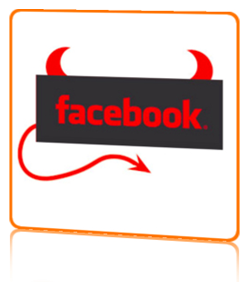You know, back in the day, friends used to ask “What the hell is Facebook?”. Now they ask “Are those all of your Facebook friends?”. How times have changed. Truth be told, I don’t have many Facebook friends. Reading all my 126 friends’ status updates is already a chore, even after blocking the feeds of quite a few (Sorry, I’m really not bothered about what you had for dinner last night).
Well not all of my Facebook friends are my actual friends. Out of the 126, I probably hang out with 5 and another 15 are my colleagues. So the remaining are acquaintances of acquaintances, long lost classmates, hi-bye pals and the like. So the term ‘Friend’ in Facebook is very vague indeed.
This is also true for Facebook Brand Pages. 1,000 ‘Likes’ or ‘Fans’ doesn’t mean that the brand is adored by 1,000 people. There will be many genuine fans, but there will also be the disgruntled, the avenger, the unhappy, the dissatisfied, the curious and the competitor’s spy. Hence, it’s very possible that a Facebook Brand page will be decorated by negative comments sooner or later.

And since I promised a guide of sorts in my previous post, here’s what I call the Rough Facebook Brand Page Guidelines or RFBPG in short:
1. How much power?
Right from the start, you have to decide how much power you want to put in the hands of your fans in terms of voicing their opinions. As a default, bar fans from making wall posts so that dissenting comments (if any) are less obvious. They will however be able to comment on your posts, but it will be buried within the particular post’s thread and not appear in the main wall.
2. It’s OK, let them post on the wall
If you feel barring people from making wall posts defeats the purpose of having a Facebook page, then go ahead. The pro of this is that positive wall posts by fans will be very obvious. But once the negative comments starts pouring in, you’d wish you never went with this option. However, once you allow fans to post on your wall, NEVER EVER bar them should the going get tough. The repercussions will be challenging.
3. I’ve got a negative comment, now what?
Well first of all… congrats! Not for the negative comment, but the fact that you’ve only got 1 negative comment. Now here’s where the real work begins. Negative comments are tricky and often unique to the person posting them. Find a solution and respond as soon as possible, remember to thank them for their valuable feedback. If it’s a comment you can’t handle – like a product defect – respond with the number of your customer service hotline.
4. Nah! I’ll just ignore, the comments will go away.
Do this at your own peril. Just one product complaint will – I REPEAT, WILL – attract other fans to join the upheaval. Negative comments must be nipped in the bud. Even if you can’t offer an immediate solution, engage the fans to show that you are listening. If a complaint has snowballed, contact the complainants in person and try to work out the problem. Never ignore negative comments, you’d be asking for trouble.
5. I thought Facebook Brand Pages are for fans to share brand experiences?
But your fans don’t know that. Disgruntled consumers think all brand channels are game to voice their opinions. Instead of bringing up the matter to customer service, Facebook allows for the ease and relative anonymity to make product complaints. So make it clear that the page is created for sharing product experience and that all product complaints should be directed to customer service. Remember to display customer service contact details up front. This may not eliminate negative comments altogether, but at least the majority of fans will think twice before posting brand-bashing comments.
The 5 steps above are just general guides, and I do not guarantee its effectiveness. The most important of all is to respond sensibly and fairly quickly, and please never leave negative comments unattended. Do remember to never sound accusatory or defensive when responding. After all, the consumer is always (supposed to be) right.

2 Comments
I’ll never be able to make up my mind on whether Facebook is the Devil or not. Connectivity is good but containment is impossible.
You are absolutely right. I guess you can’t contain the freedom of speech, and by doing so will only add to the detriment of the brand. The devil thing, well, it so happens that I stumbled upon the visual which I thought was cool to be used as part of the post…
Comments are closed for this article!